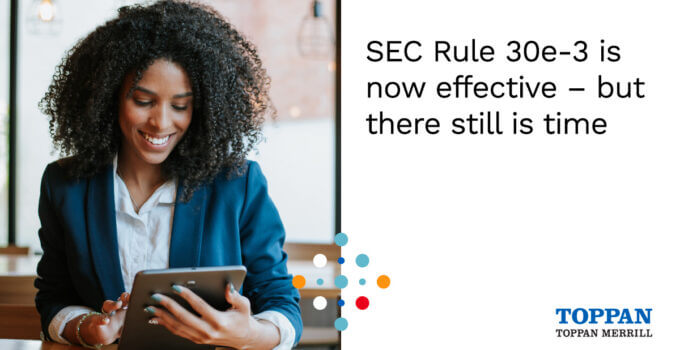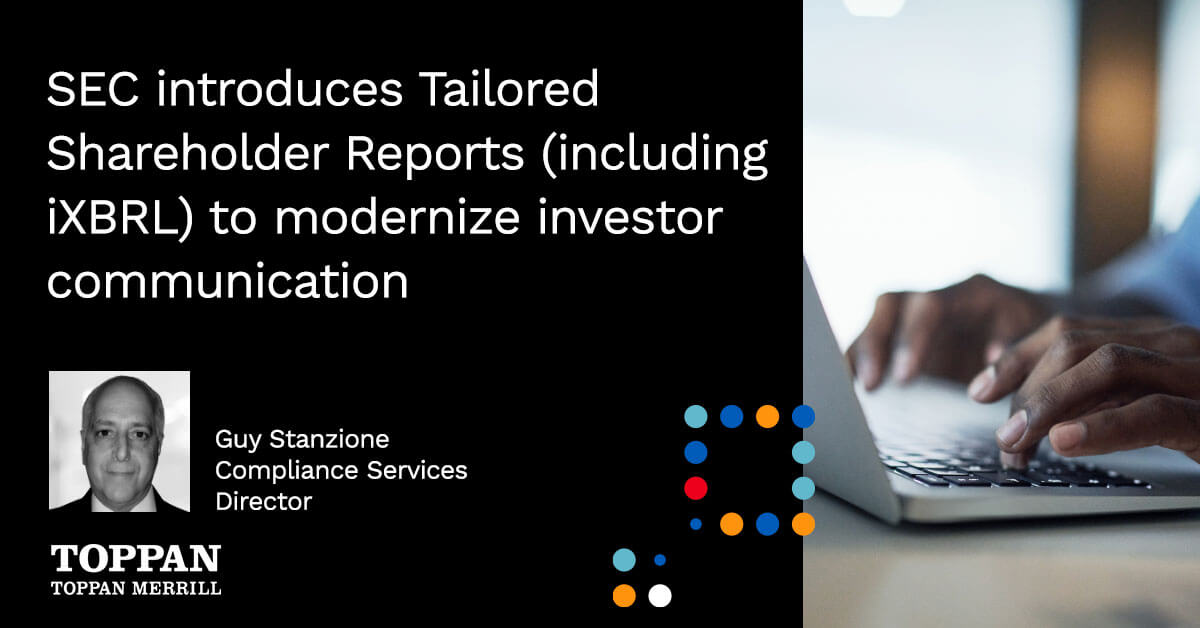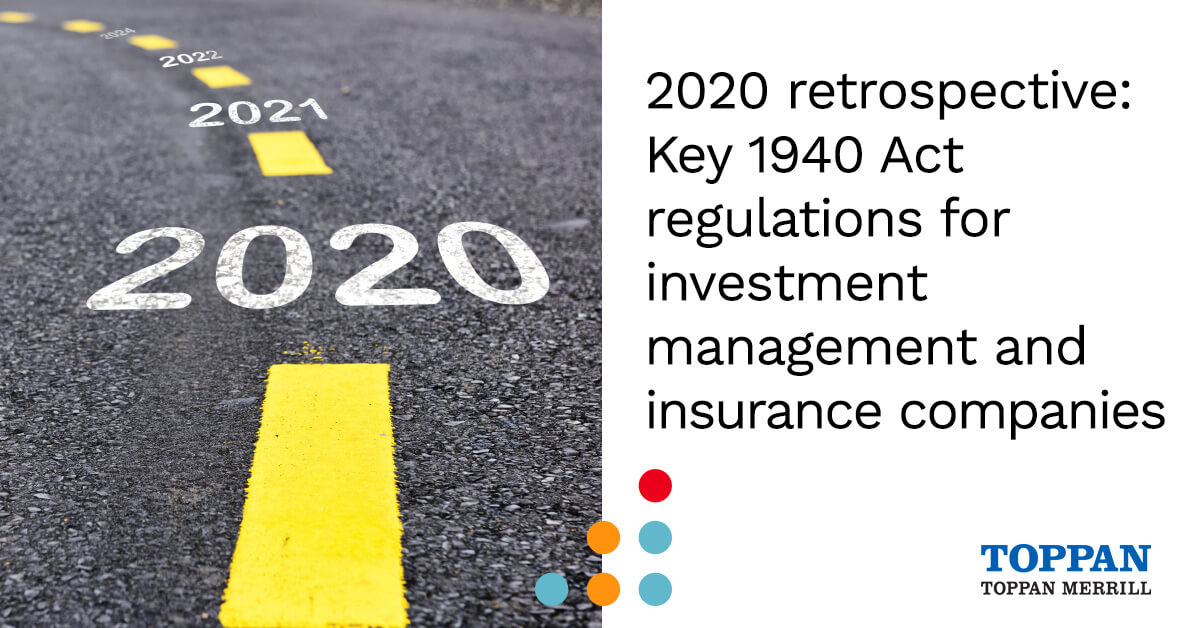A Brief Recap
As of January 1, 2019, Rule 30e-3 officially became effective. Rule 30e-3 creates an optional “notice and access” method for delivering shareholder reports. In order to rely on the Rule, funds will be required to make their reports and other required materials publicly accessible, free of charge, at a website address specified in a short form paper notice to shareholders (a Notice), and meet certain other conditions, which include protections for investors who lack internet access or prefer to continue to receive paper reports.
To this end, Rule 30e-3 provides that investors may elect to receive paper reports on a per-report basis or through a one-time request to receive all future reports. The Commission also adopted an extended transition period with staged effective dates, with the earliest a fund could rely on the Rule to satisfy shareholder report transmittal requirements being January 1, 2021.
You can access more specific information and requirements on the new rule here: Federal Register
Actions points and considerations as you prepare for the new Rule
- Ensure that you and your service providers are ready to gather preferences for receipt of shareholder reports, keep in mind that you must start preference management no less than 2 years prior to relying on the Rule, assuming you want to rely on the Rule prior to January 1, 2022.
- Review the cover pages of your summary and statutory prospectuses and shareholder reports to determine how best to accommodate the new required disclosure.
- Start thinking about the “Notice” from three perspectives:
- What information, if any, you want to include from the shareholder report. Keep in mind that if you include any shareholder report information on the Notice, then the Notice will need to be filed as an exhibit to the N-CSR/N-CSRS.
- Design elements of the Notice, keeping in mind that the material, including graphics presented, must not mislead or overpower the Notice message.
- Mailing: do you have other communications that can mail along with the Notice, such as an account statement, to save on future mailing costs?
- Review your Website literature layout. Keep in mind that the shareholder report will need to be accessible within one click from the URL listed in the Notice.
- Be prepared to post full holdings for each fiscal quarter end. Funds that use summary holdings in their shareholder reports will need to post separate full holdings as of second quarter and fiscal year end. Additionally, shareholders who request paper reports will need to receive full holdings in paper as well (including for first and third quarters).
- Keep the client relationship and communication in mind – there are different requirements for variable products, issuing annuity and life contracts, and funds sold through intermediaries that must be taken into consideration when it comes down to the communication to investors.
- Ensure the required number of notifications between now and 2021 are sent to investors to allow you to utilize 30e-3. The requirement is different for variable products, who offer funds as part of the underlying funds, included in the investment.
In conclusion, many firms in the industry will be faced with many decisions that will need to be carefully considered. If your firm is looking to be an early adopter of the Rule, it should plan to address these issues prior to its first annual update or shareholder report in 2019.
Toppan Merrill is here to help.
Should you have questions about the 1940 Securities Act and the compliance requirements for investment companies, visit ToppanMerrill.com, connect with us via [email protected] or by phone at 800.688.4400.


